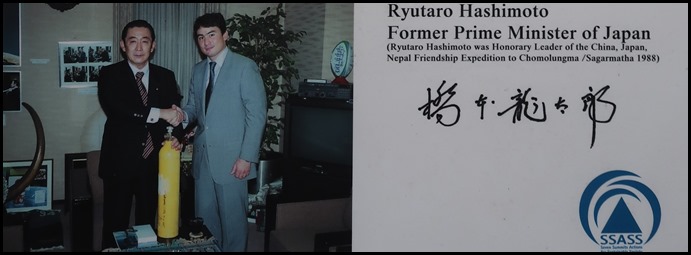Mountain Rubbish

Beez Neez now Chy Whella
Big Bear and Pepe Millard
Sun 8 Apr 2018 22:57
|
Mountain Rubbish Exhibition, International Mountain
Museum
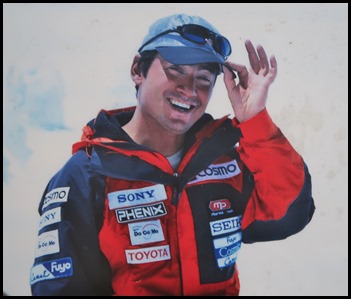 At the far end of the Mountain Museum
we found an exhibition that shocked, amazed and lifted the spirit all at once:
Cleaning-up the “Mother Goddess of the Earth”
After twice failing to climb
Mount Everest in 1997 and 1998, I finally reached the top on my third attempt on
May 13,1999, as the 790th climber to stand on the summit. With that, I had
fulfilled my goal of becoming the youngest person at that time to scale the
highest peaks of the world’s seven continents.
Reaching the top of Everest,
however, was not the end of my quest, but rather a new beginning. This was
because while climbing on the routes on both the Chinese (Chomolungma) and
Nepalese (Sagarmatha) sides of the mountain over the three seasons. I had been
shocked to find huge amounts of discarded rubbish and human waste left behind by
previous expeditions, particularly those from Asia.
I therefore decided to organize a
series of expeditions to Mount Everest over the succeeding years that would
attempt to clean up the mountain rather than climbing to the top. In the four
years since then, I have brought four international teams to clear garbage from
both sides of Mount Everest, on the Chomolungma route in China in 2000 and 2001,
followed by the Sagarmatha route in Nepal in 2002 and this year. In total, we
have collected more than seven tons of garbage, including tents, clothing,
ropes, fuel cans, food packaging and oxygen cylinders. The current exhibition at
the Hyatt Regency n Kathmandu includes examples of the garbage collected during
this year’s expedition that cleared the route from Base Camp at 5,300 m to the
Advanced Camp at 6,500 m and other camps up to the South Col at 8,000
m.
This summer there is great
interest in Mount Everest, since 2003 marks the 50th anniversary of the first
ascent by Sir Edmund Hilary and Tenzing Norgay in 1953. The allure of climbing
Everest, however, has been with us ever since the first expeditions to the
mountain in the early part of the twentieth century. In 1923, George Leigh
Mallory famously said that he would climb Everest “because it was there.” In
contrast, eighty years later at the beginning of the twenty-first century, my
own recent expeditions to the mountain have taken place for a much more mundane
reason: “because so much garbage is there!”
At this conclusion of the four
Everest clean-up expeditions, I would like to stress once again the great
influence of the actions of climbers have on the environment of the mountains.
Over the 37-year period between the first ascent in 1953 and 1989 only two
hundred and eighty-five climbers reached Mount Everest’s summit. In contrast,
the thirteen years since then have seen almost eight hundred mountaineers reach
the top, an average of more than sixty climbers each year. In this era of
intensive use of the mountain, our actions and those of our successors will have
a great influence in ensuring that Mount Everest, the “Mother Goddess of the
Earth,” can be enjoyed by future generations in its original pristine
condition.
Finally, I would like to express
my sincerest thanks to the many people and organizations who have given such
generous support to ensure the safe and successful completion of the four
Noguchi/Asia Cleanup Expeditions.
I am particularly grateful to all
the expedition team members, without whom nothing would have been possible. Ken
Noguchi. May 26, 2003
What a fantastic thing to have done
for Sagarmatha, but, it does beg the question – How much rubbish is on on the
other famously climbed peaks not only in the Himalayas but throughout the world
??? What are we doing to our planet. We looked at each of the following pictures
and read the information below them (a few didn’t have labels but it’s clear in
meaning) with heavy hearts, if this is what we can see what do the ocean floors
look like.
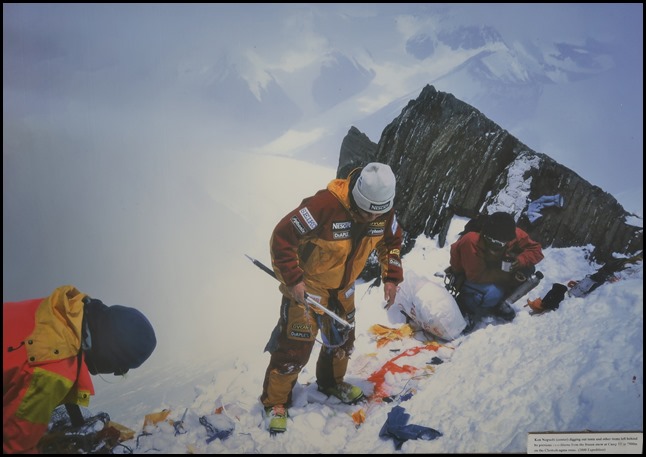 Ken Noguchi (center) digging out
tents and other items left behind by previous expeditions from the frozen snow
at Camp III at 7900 m on the Chomolungma route. (2000
Expedition).
 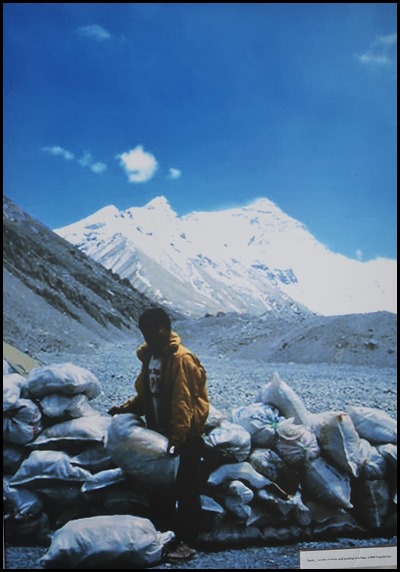 Bear stands beside an ice axe made from different garbage collected by the
mountain cleaning expedition team – there were actually beer labels in the
mix....... Sorting out the garbage and putting it in bags (2000
Expedition).
 The
mountain of garbage weighing 1.5 tons collected at the Chomolungma Base Camp
(2000 expedition).
 The oxygen
cylinders at Base Camp (5,200 m ) included some dating back from the 1960s (2000
Expedition)..
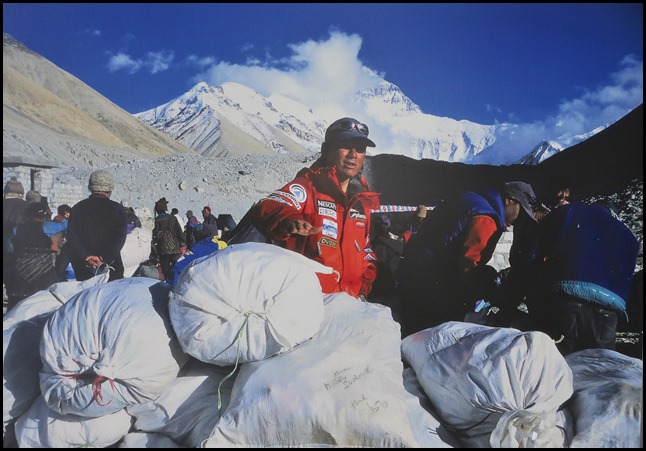 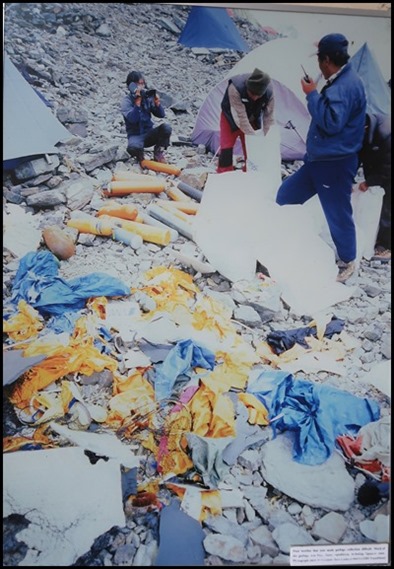 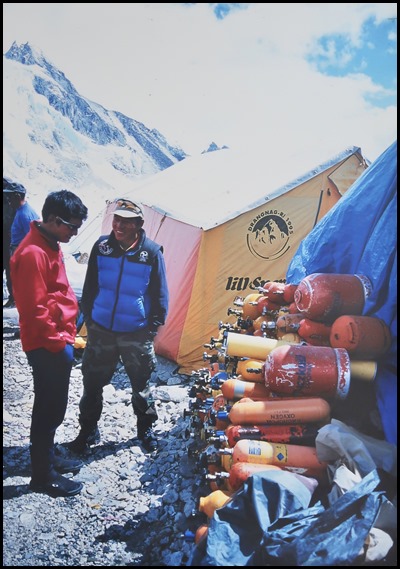 Poor weather that
year made garbage collection difficult. Much of the garbage was from Asian
expeditions, including Japanese ones. Photograph taken at Advance Base Camp at
6,600 m. (2001 Expedition). A stack of cylinders.
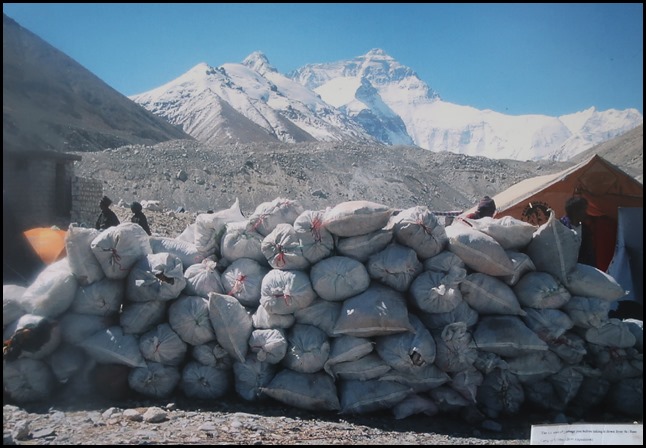 The 1.6 tons
of garbage just before taking it down from the Base Camp at 5,300 m. (2001
Expedition).
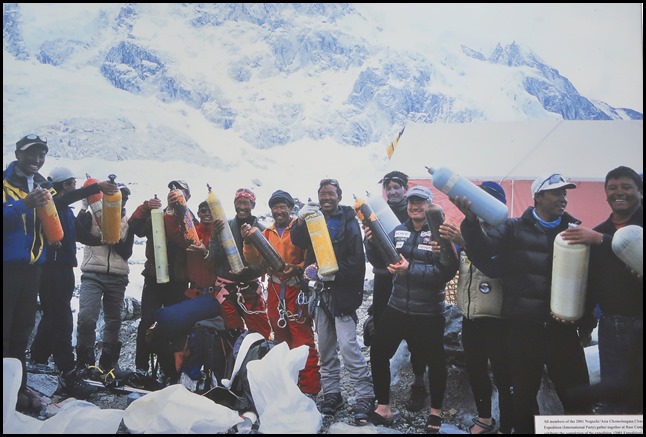 All members
of the 2001 Noguchi / Asia Chomolungma Clean Up Expedition (International Party)
gather together at Base Camp to celebrate the completion of the
expedition.
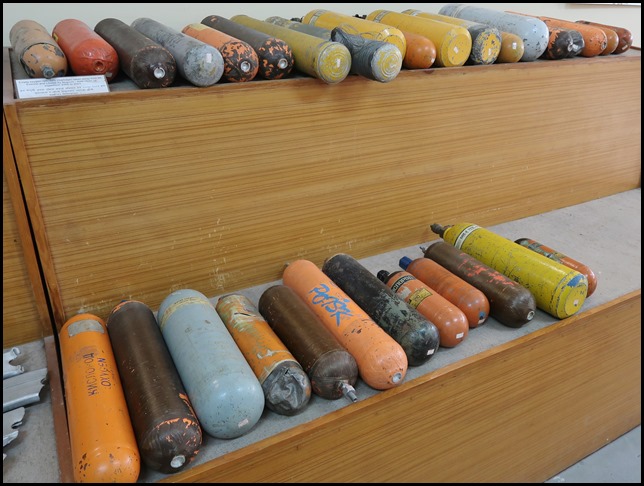 Empty oxygen
cylinders taken away from Mt. Everest and Lhotse by Noguchi / Asia Clean Up
Expedition 2000 to 2003.
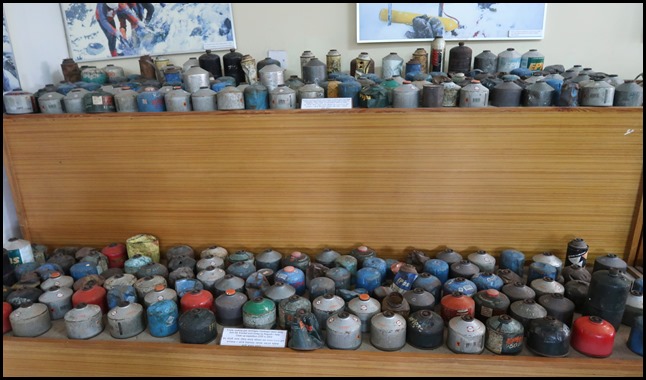 Empty cooking gas cartridges (garbage) taken away from Mt. Everest and
Lhotse by Noguchi / Asia Clean Up Expedition 2000 to
2003.
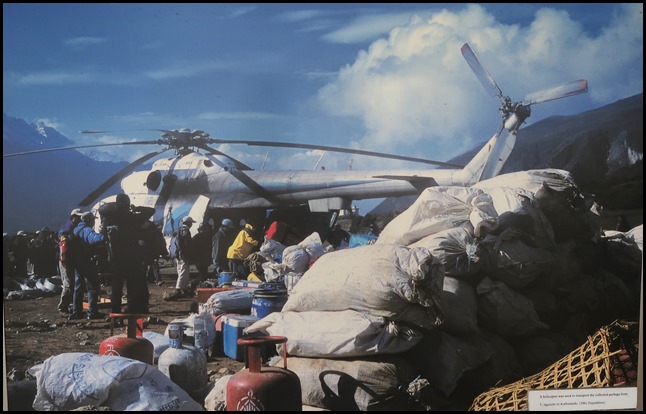 A helicopter was
used to transport the collected garbage from Tangpoche to Kathmandu. (2002
Expedition).
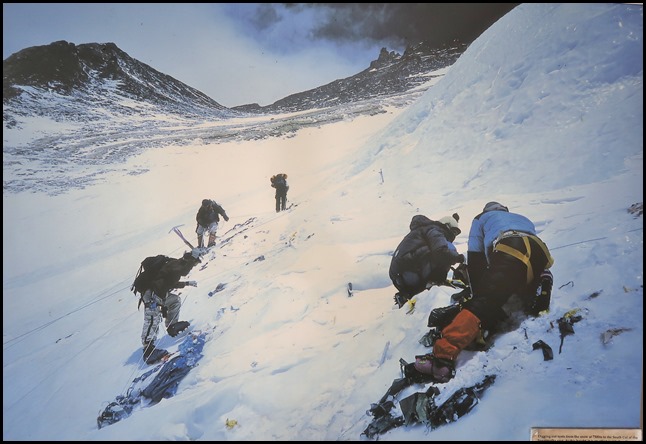 Digging out tents
from the snow at 7,300 m to the South Col of the Sagarmatha route. At this
height, it is an effort just to breathe. (2002 expedition).
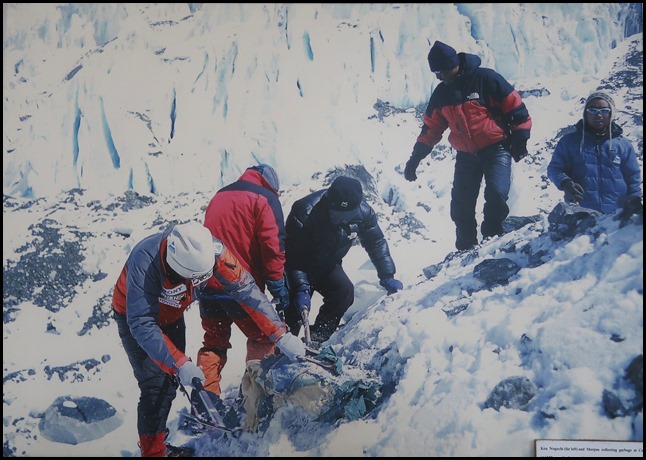 Ken Noguchi (far
left) and Sherpas collecting garbage at Camp II at 6,500 m on the Sagarmatha
route on May 1, 2003. (2003 expedition).
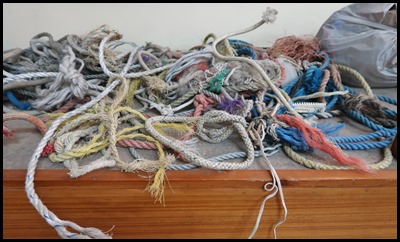  Broken and
torn tents, ropes and broken ladders taken away from Mt. Everest and Lhotse by
Noguchi / Asia Clean Up Expedition 2000 to 2003.
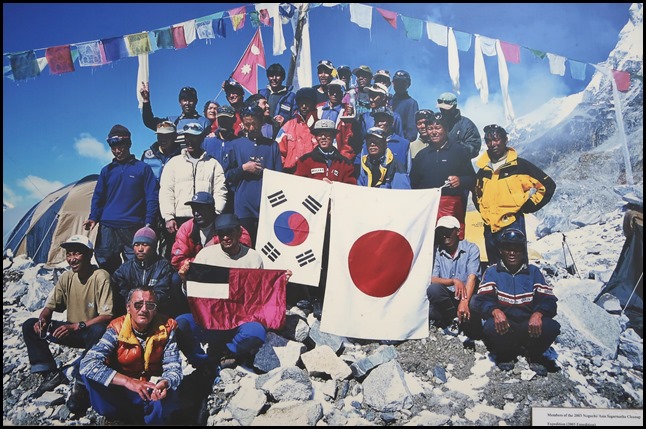 Members of the
2003 Naguchi / Asia Sagarmatha Clean Up Expedition.
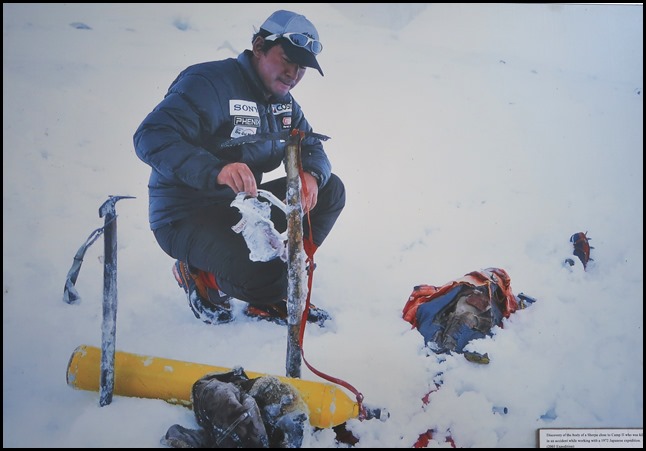 Discovery of the
body of a Sherpa close to Camp II who was killed in an accident while working
with a Japanese expedition. (2003 expedition).
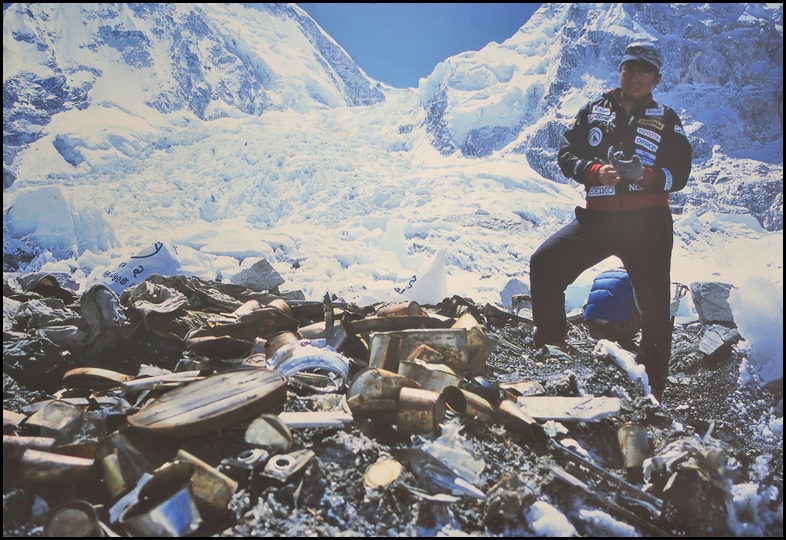 Such an incredibly sad
sight.
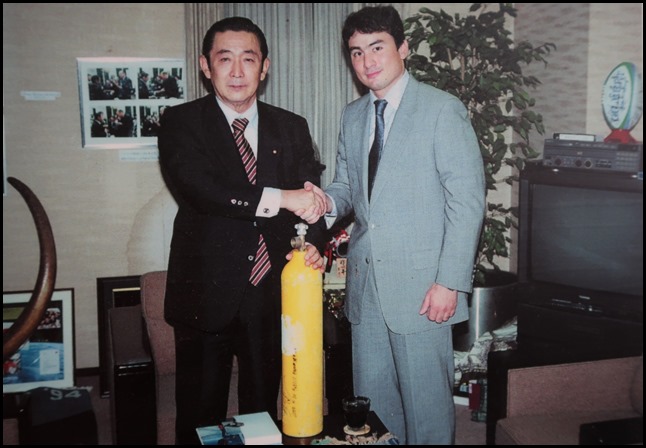 An amazing story to finish with:
Ken Noguchi and My Oxygen
Cylinder from Mount Everest
There is an old oxygen cylinder
in the reception of my office that was found and brought back from 8300 m on the
Chines side of Mount Everest (Chomolungma) by Ken Noguchi. One day Ken called to
ask if he could meet with me, and I agreed without knowing the purpose. At the
meeting, Ken showed me this cylinder and said, “This was left behind on Mt.
Everest by your expedition!” I could read the date of production, July 1987,
printed on its French body.
In the Spring of 1988, Japan,
China and Nepal planned a joint expedition to climb Mount Everest simultaneously
from both the Chines and Nepalese sides, and it was intended to fly a
carp-shaped streamer from the summit on May 5 to celebrate the Japanese
tradition of Children’s Day. In the end, our expedition was successful in
scaling Mt. Everest and this cylinder is surely one that our expedition left
behind on the Chinese side at that time. Honestly, I was surprised and ashamed
that the cylinder had been left there.
Now it is common sense to avoid
polluting nature, though this behavior was not as well established in the
1980’s. I came out in a cold sweat when Ken showed me this evidence, and I am
sure anyone would feel the same way if they had been in my position. I decided
to display the cylinder in my reception room lest I forget.
Following his successful ascent
of Mount Everest in 1999, Ken returned to the mountain in each of the following
four years including the current one with expeditions to clean up the climbing
routes, something that no-one else in the world had done. Over this period, his
expeditions have collected more than seven tons of garbage from the
mountain.
In the future, I hope that all
mountaineers aiming to climb Mount Everest and the other peaks in the Himalayas
will continue to follow Ken Noguchi’s example in preserving the natural
environment.
ALL IN ALL SO SAD BUT AT
LEAST SOMEONE HAS PASSION TO DO SOMETHING ABOUT IT
QUITE HEART
WRENCHING |
